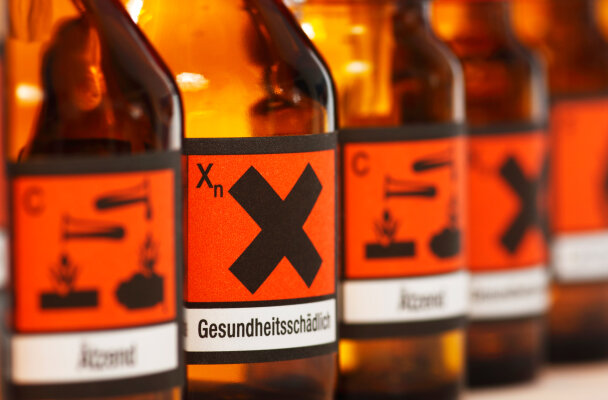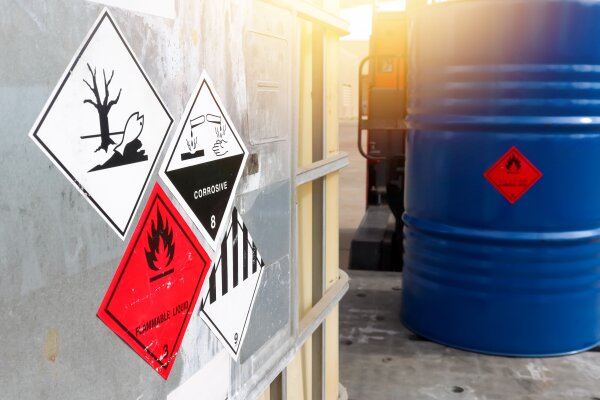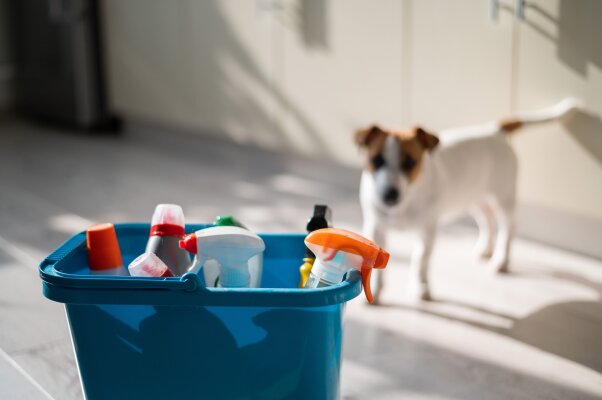Shelf life of disinfectants: What is behind the expiration date?

In the last two years in particular, the consumption of disinfectants has also risen sharply in the private sector. This brings with it a number of questions – for example, what the shelf life of disinfectants is and what it means when the expiration date is reached.
In this blog post, we have summarized how long different types of disinfectants last, whether they have to be disposed of after their shelf life has expired, and what the Robert Koch Institute stipulates in this context.
What is the shelf life of disinfectant?
The actual shelf life of a disinfectant depends on a number of different factors. Above all, the composition, the type of closure and the respective alcohol content play an important role. But other aspects such as the brand, the manufacturer and the type of disinfectant can also have a significant impact on shelf life.
In principle, however, it can be said that the shelf life of different disinfectants can best be divided in terms of type. The shelf life of the disinfection solutions can then be as follows:
Hand disinfectant
Hand sanitizers contain alcohol as well as other ingredients, which can range from sporicides(such as hydrogen peroxide) to humectants(think glycerin, for example) to conditioning agents. This allows the skin not only to be freed from harmful microorganisms, but also to be protected from drying out at the same time.
The actual expiration date must of course always be stated in the package insert, but ranges from 6 to 12 months depending on the manufacturer and product. An example is ALCOMAN disinfectant, which also has a shelf life of 12 months after initial opening.
Wound disinfectant
Wound disinfectants, on the other hand, do not contain humectants or care substances, but other contents such as phenoxylethanol, octenidine or sodium chloride or sodium hydroxide. As a result, this type of disinfectant provides strong bactericidal and antiseptic properties. However, the shelf life is the same – even for wound disinfectants it is usually between 6 and 12 months.
Surface disinfectant
Surface disinfectants often have a more aggressive form of action, as this disinfection is not in direct contact with the skin and can be more concentrated. Ammonium compounds, aldehydes, glycoderivatives and peroxide compounds are not infrequently used.
Although surface disinfection likes to be stronger, it does not always bring a longer shelf life. As a usual shelf life value can be called about 12 months. However, exceptions prove the rule: Some representatives of this category can be used for a longer period of time, provided this was explicitly stated on the packaging.
Disinfection wipes
The situation is somewhat different for disinfectant wipes. These have a special cloth shape and are soaked with the disinfectant, which can sometimes greatly shorten the shelf life. Depending on the area of application (such as disinfectant wipes for hands or those for surfaces), there are major differences in composition, which can also affect shelf life.
Although the ingredients are not too different from other types of disinfectants, the wipe form significantly reduces the shelf life in most cases. Depending on the product, this is often 4 to 12 weeks from opening.
Warum endet die Haltbarkeit bei Desinfektionsmitteln?
It may seem counterproductive for disinfectants to have expiration dates. There are actually two primary reasons for this – while on the one hand there are legal requirements for pharmaceuticals and biocides in Germany, on the other hand thevolatility of alcohol also plays a decisive role:
- Legal requirements: In Germany, there is a legal obligation to label all pharmaceuticals and biocides with an expiration date. Disinfectants also fall into this category, which is why they are included in this specification. This not only protects customers, but also relieves the manufacturer of obligations. Thus, once the expiration date is reached, the latter must no longer be able to guarantee that safe use and sufficient efficacy continue to exist.
- Efficacy: In addition, the ingredients of disinfectants contribute to the fact that the effectiveness decreases over time. The number one culprit here is alcohol, which is contained in practically every product. This simply evaporates over time. In particular, temperature fluctuations and changes in humidity can contribute to this to an increased extent.
Disinfectant shelf life if expired: Is it still fit for purpose?
In principle, of course, expired products should not be reused. In the case of disinfectants, this is primarily because there is no longer any guarantee of continued effectiveness. If the disinfectant has already been open for a long time, the effect may even be completely lost.
The situation is often somewhat different if the disinfectant has not yet been opened when the expiration date is reached. Since the volatile alcohol cannot escape, the effectiveness is sometimes less impaired. By the way, it is recommended in any case to mark the product with the corresponding date directly at the time of opening in order to be able to keep track of the opened period.
Whether the respective disinfectant is still appropriate after expiration is also again related to the type of disinfectant. Here again, the following differentiations can be made:
Hand disinfectant
Hand sanitizer is not harmful after reaching the expiration date, but often can not cope with the high demands of everyday life. It is then suitable for hand care further at most. The shelf life of hand disinfectant after opening is therefore given, but this is then no longer useful.
Wound disinfectant
With wound disinfectants, on the other hand, the situation is different. Under no circumstances should this be used again, as it has direct access to the body. The corresponding risk in the event of a failure of the effect simply cannot be put into perspective.
Surface disinfectant
The shelf life of surface disinfectants after opening is also usually given, but is characterized by low efficacy due to the volatile alcohol. For surface disinfection, it is better to use a product where you can still be sure that bacteria, viruses and co. are removed.
Disinfection wipes
The same can be said about disinfecting wipes. These should only continue to be considered if they were not yet opened when the expiration date was reached.
What is the shelf life of hand disinfectants after opening – according to RKI?
Incidentally, the Robert Koch Institute (RKI) also agrees with the above opinion. The Guide to Hand Hygiene in Healthcare Facilities states that hand sanitizer may be used for a maximum of 6 months after opening. This line is chosen rather cautiously, but offers very good protection against loss of effect.
Furthermore, this time limit can be extended to other types of disinfectants found in healthcare facilities. In the private sector, however, it is sufficient to adhere to the manufacturer’s specifications – which may extend beyond 6 months.
The shelf life of disinfectants is not guaranteed after the expiration date
Although disinfectants do not produce harmful effects even after the expiration date, they should no longer be used in the opened state. The fault is the loss of effectiveness, because the alcohol contained has volatile properties. The shelf life of disinfectants also depends on the type of agent and usually ranges from 4 weeks to 12 months. Play it safe and dispose of the product after this period.
FAQ
It is difficult to give a general answer to how long disinfectants last. In addition to the type of remedy, the ingredients and the manufacturer’s specifications also affect the shelf life. While most disinfectants expire after 6 to 12 months, disinfectant wipes should not be used after 4 to 12 weeks.
The fact that disinfectant loses its effect over time is primarily due to the main ingredient – alcohol. It is mostly contained in the form of propanol, isopropanol or ethanol and has volatile properties. As a result, it slowly “disappears” from the disinfectant, so that its effectiveness is negatively affected. This applies in particular to opened products.
Expired disinfectant should be disposed of properly. Due to its ingredients, it is one of the aqueous solutions that must be disposed of as chemical waste – never flush it down the drain or toilet! Instead, disposal in separate containers for chemical waste (such as at recycling facilities or waste stations) is necessary.
Similar specifications also apply to wound spray. In addition to alcohol, it is not uncommon for them to contain surfactants and polyhexanide, which contribute to wound healing. For most representatives of wound sprays, the shelf life after opening is about 6 months (Hansaplast comes to mind). However, individual manufacturers and products can also have a longer shelf life, which is indicated on the packaging in each case.
Do you have questions about the topic or would you like to suggest a topic? Please contact us by phone at +49 30 2096579 00 or send us an email at info@medsolut.com.




